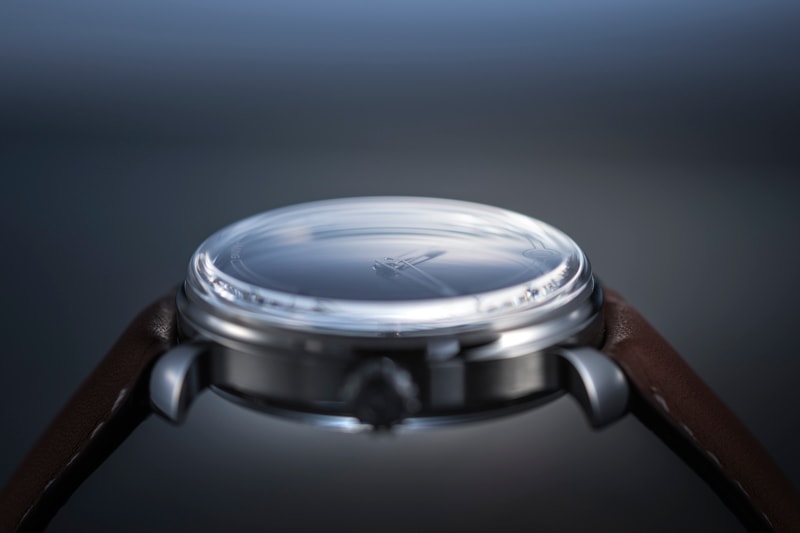
Today’s post is the first of an in-depth series of articles focusing on our latest watch and flagship, the 19.01.
As a whole, our company philosophy is built around the principle of transparency - we believe in delivering value to our customers in a piece that’s a little different. ‘Value’ is not the same as price: a $10 object can be poor value if you cannot use it, but a $1m one is good value if it can be easily resold anytime for double. Similarly with our watches: the debut 17.01 had both value and a very low price. The 19.01 has a higher price but delivers arguably more in value, given the origin of components, horological pedigree (our construction partner Schwarz-Etienne makes its own hairsprings in-house, and has a sister company that produces the picosecond lasers used on our crystals, for example) and level of sophistication in construction. Certain techniques simply cannot be done - for example the gradient sapphire dial - below a certain cost, and the results would simply be poor should we attempt to do so.
The 19.01 was approached concept-first, which is to say we were clear about what the design had to do - and we would make the execution work around it. It had to be a transparent watch; one about the movement first and the rest of the design as a simple but sophisticated showcase for it. This is why the actual metal of the case is restricted effectively to structural components - band and lugs - and the rest is sapphire. The dial is sapphire to give a sense of the underlying complexity and engineering purity of the movement - but with the gradient finish so the hands remain legible. Too much sapphire, however, is both expensive and has a tendency to look a bit like plastic.
On the other hand, the movement is a very technical looking thing: too much exposure and it becomes a bit too visually messy and gives the impression of fragility (simply because all small components are on view). All movement plates are sandblasted and anodised grey; the bridges are also anglaged. Closed and smooth surfaces are required for visual balance and to provide a solid contrast to the fine elements. Those surfaces are all about contrasts and interaction with light: you’ll notice that polished and brushed finishes abut, and the same for concave and convex surfaces. These are mirror polished to echo the domed sapphire edges and provide a continuous visual transition between case and crystal, solid and transparent.
The consequence of all this is the watch is a bit of a chameleon: it changes color and apparent weight as light changes, it can appear larger or smaller depending on what’s reflected and how brightly. It can appear to float on the wrist, especially when the lower crystal guides light through from the other side and glows like a halo.
We also used a large quantity of SuperLuminova X1 to provide long-lasting night time legibility and a distinctive lume signature; much like the running lights on modern cars. Combined with the deep box crystal and internal reflections, it makes for a rather surreal image. X1 is the latest formulation of SuperLuminova and combines both brightness and longevity - the 19.01 is actually one of the brightest watches we’ve seen, despite not being designed as a sport watch.
Though pretty much all modern horology is arguably a personal indulgence, we still firmly believe that you must be able to tell the time with your watch. This can be a rather contradictory design objective at times: if precision of readout is the sole objective, then you land up with an instrument and not a whole load of options design-wise. We settled on the compromise of ‘within a minute or two of precision* and at a glance’ - given the abundance of time sources (most of which never seem to agree) - I think this is fair. Accuracy, however, is something else entirely - and a topic for the next post.
- MT
*’Precision’ is the ability to differentiate between small differences. ‘Accuracy’ is the absolute truth of that differentiation: a ruler may have a lot of very fine markings but of unequal distance; on the other hand, it may be exactly one meter long, but lack any divisions. The former is precise, the latter is accurate - and they’re not they same thing. I’m sure you can see how this is quite important in watchmaking and design.





